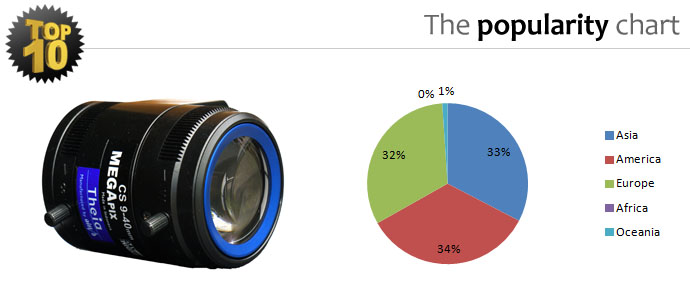Dr. Bob Banerjee, Product Marketing Manager at Bosch Security Systems, examines the value of network video.
Dr. Bob Banerjee, Product Marketing Manager at Bosch Security Systems, examines the value of network video.
Cost is one of the primary factors that influence the selection of one integrator's bid over another in the purchasing process of a video surveillance system. While acquisition expense is significant, there are other factors that impact the system cost, which translate into total cost of ownership (TCO).
Estimating TCO involves understanding the initial acquisition cost, the operating requirements, labor for installation and maintenance, and exposure to risk or liability — such as fines for not complying with video regulations in certain industries. Time savings and efficiencies achieved must also be considered in the equation.
Some design choices only impact the acquisition and installation costs of a system, such as using Power over Ethernet instead of added power supplies for the cameras. However, the greatest impact to TCO in large video installations comes from recording and storage technology, which impacts maintenance costs over time.
There are three main reasons for high storage requirements for modern surveillance systems: a large quantity of cameras; recording at high video quality; and/or retaining video for a long period of time — months or even years.
Common Approaches to IP Video from the TCO Perspective
Digital video recorders (both embedded DVRs and PC-based DVRs) are designed as stand-alone systems. This means the hard drive storage is either included inside the unit, or for more storage, a disk array can be directly attached to the DVR. The consequence is that each DVR is a silo, making the storage available only to its cameras. The storage is rarely shared between multiple DVRs, so users cannot take advantage of economies of scale. A single 10-terabyte storage unit will be more economical and more reliable than 10 units with one terabyte of storage for each or embedded hard drives.
Network video recorders comprise three key components — management software, a server platform and attached storage to record video. These systems typically require one NVR for every 64 cameras, because the PC is a bit rate bottleneck for the video trying to reach the storage.
For large facilities such as airports, this can mean a significant investment in servers, as well as time, for IT to administer the technology with operating system patches and anti-virus updates. The total cost of ownership of server hardware and software can vary anywhere from one to five times the initial purchase cost per year in terms of maintenance cost.
 Increasing video quality or retention time will require purchasing additional storage and reconfiguring each affected camera or NVR. In this scenario, users are not only paying for the extra hardware and software required, but also pay for the integrator's labor. This reformatting can take days, depending on how many cameras are impacted.
Increasing video quality or retention time will require purchasing additional storage and reconfiguring each affected camera or NVR. In this scenario, users are not only paying for the extra hardware and software required, but also pay for the integrator's labor. This reformatting can take days, depending on how many cameras are impacted.
While DVRs and/or NVRs may make sense for a user's video needs and budget, there is an emerging approach that may be the better alternative to help lower video systems' total cost of ownership.
Eliminating the NVR PC
An alternative approach to video storage is to bypass the need for NVR PCs all together and make network cameras stream directly to the disk array storage. The same principle also applies to encoders — the devices that translate analog camera signals into digital. Disk array RAIDs that use an IP-based storage networking standard called Internet Small Computer System Interface (iSCSI) can record video without the added expense of NVR server hardware, software and their maintenance costs.
With the addition of video recording management software that acts as a traffic cop, video can be distributed in one gigabyte blocks across various disk arrays on the network. Each storage unit is no longer a silo. Rather, the software will pool all RAID arrays in a system and, after dividing the total capacity into one gigabyte storage blocks, allocates storage on demand to network cameras and encoders.
This approach allows for automatic load-balancing, better storage utilization, as well as greater system flexibility and easier adaptation to changing storage demands. It supports a phased deployment of storage, allowing users to add storage when they need it.
With the steady reduction in storage costs that have occurred recently — typically halving every two years — and that are expected to continue, purchasing the full amount of storage equipment up-front is a large capital investment that does not make economic sense. If long-term retention is required, users can initially purchase a certain amount of storage and wait for storage costs to decrease or the users can wait for next year's budget allocation to become available and then purchase the additional storage needed.

With video recording management software that treats all RAID arrays as a virtual pool, the integrator will simply need to add the storage devices and alert the software to their presence. The software will then make those storage devices available to all of the cameras or encoders in the system.
All of this can be done with the addition of one PC server for every 2,000 cameras.
By reducing maintenance costs and better utilizing storage technology, users have the ability to reduce the total cost of their systems by up to 30 percent over their lifetimes. All users need to do is ask their integrators to eliminate NVRs from the system design.
Educated buyers, who understand the approaches to IP video and their costs, can challenge potential integrators to design the most appropriate system for their needs — one that meets budget constraints for acquisition and long-term maintenance.
Product Adopted:Digital Video Recording